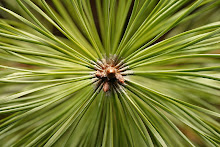Claude Monet was born November 14, 1840 in Paris. A few years later his family moved to Le Havre where his father was a merchant. He was a rebellious child with a talent for drawing caricatures. Early on he studied drawing under Jacques-Francois Ochard, a former student of Jacques-Louis David but soon met the artist Eugène Boudin who became Monet's mentor and taught him to use oil paints. Boudin also taught him the pleasures and benefits of "en plein air" (outdoors) painting. Always an encouraging supporter, his mother Louise Monet died in 1857 when Claude was 16 years old. He then went to live with his widowed childless aunt, Marie-Jeanne Lecadre. He entered the prestigious École des Beaux-Arts but soon rejected the school's traditional methods and techniques and left to attend Académie Suisse in Paris. There he formed friendships with fellow artists Camille Pissarro and Gustave Courbet. After a short time in the military he returned home to le Havre where he met and was influenced by artist Johan Barthold Jongkind. Soon Monet joined the studio of Swiss painter Charles Gleyre in Paris and met artists Pierre-Auguste Renoir, Alfred Sisley, and Frédéric Bazille with whom he formed the basis of the Impressionist movement. The Impressionists, or "insurgents" as they were called, rebelled against the hierarchy of the art world in Paris where it was dictated that painting should be a laborious process with a smooth result without a hint of brushstrokes and focusing on subjects from classical literature or history, so much so, that one needed a classical education to appreciate the work. This new art was painting directly from nature with the focus on the visual play of light on the scene. It was intimate and personal to each artist and involved unabashed brush strokes to simulate the reflection of the sunlight on nature. The rebellious Monet was recognized as the leader of the movement with his outspoken disdain for the artistic establishment in Paris. But it wasn't until a year later when Monet met the artist Edouard Manet that he found his greatest inspiration as an Impressionist. He spent this period perfecting his plein air painting and would not paint unless the sun light was reflecting in just the way he wanted.
Camille Monet became ill in 1876 but non-the-less produced their second son in 1878. She died September 5, 1879 of Tuberculosis at the age of 32. Monet had moved his family to Vétheuil in 1878 where Camille died. In 1883 Monet moved to Giverny, also on the Seine, forty miles from Paris. During this period, the grief stricken Monet created some of the best paintings of the 19th century. He was finally prospering and could afford to buy the house at Giverny in 1890. Monet took up gardening at Giverny, employing up to seven gardeners and would remain there for 43 years until his death. In 1892 he married his mistress Alice Hoschedé with whom he had begun an affair in 1876, three years before the death of his first wife. Alice died in 1911 and Monet was then cared for by her daughter and Monet's daughter-in-law, Blanche Monet. It was during this time that Monet's eyesight began to fail him as a result of cataracts involving both eyes.
The first effects of his cataracts can be seen in the paintings he made in Venice in 1908. as cataracts develop, whites become yellow, greens become yellow-green and reds, oranges, blues and purples are replaced by reds and yellows. Details fade and become blurry. Monet could continue painting by labeling his colors and his habit of always placing his colors in the same order on his palette. He was, however, used to painting just what he saw so gradually his paintings became composed mainly of reds and yellows, and his beloved blues vanished. In time he lost sight completely with his right eye and his left eye was losing it's acuity, so in the summer of 1922 he had to stop painting entirely. In 1923 he underwent surgery to remove his cataract from his right eye and he could see again wearing special green glasses. But his vision was still altered and he refused to have surgery on his left eye. The paintings done while his cataracts affected his vision have a more reddish tone which is characteristic of the vision of cataract sufferers. It is possible that after the surgery he may have been able to see ultraviolet wavelengths of light which are usually not associated with normal eyesight, so this may also have affected his color perception. He said after his surgery that he didn't see red or yellow anymore only blue. He still had the colors on his palette and he said he "remembered them very well." In spite of this hardship, Monet continued to paint up until 1926 shortly before he died at the age of 86 from lung cancer.
Monet is regarded as the quintessential Impressionist for his devotion to the ideals of the movement throughout his long, prolific career. He was a genius of the play of light and color and his understanding of such helped him to create some of the most important paintings in the history of art.
More to come on Monet in my next post.
For a collection of Monet's paintings go here -
http://www.claudemonetgallery.org/












































Wonderful, Maureen. I adore Monet and love reading about him and his art. Thanks for sharing this.
ReplyDeleteAnother great biography, Maureen! Thanks.
ReplyDelete